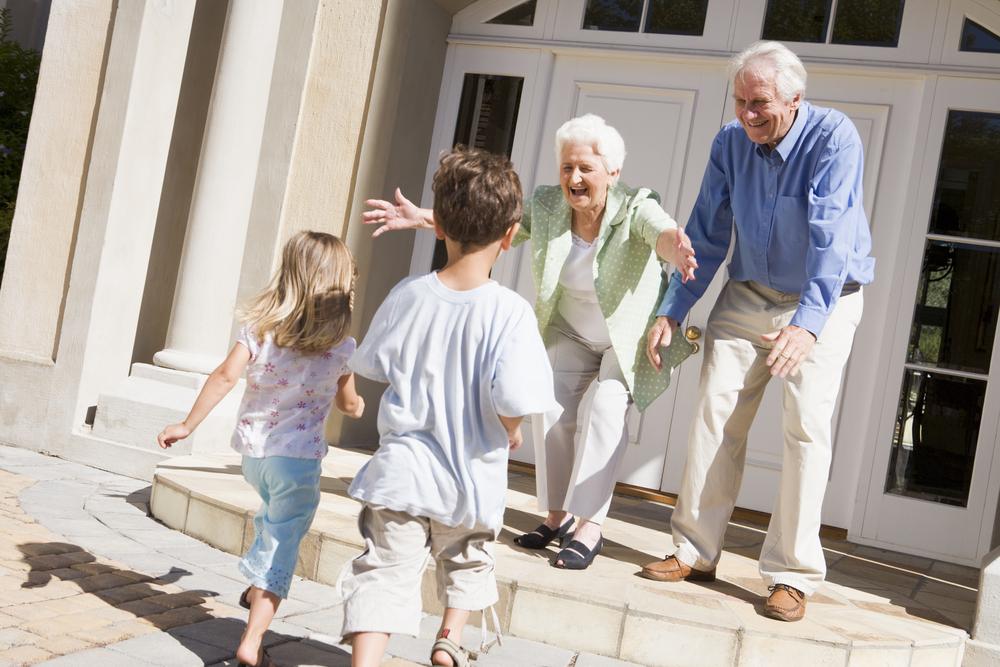You’ve just welcomed your aging parent, or maybe even grandparent, into your house. Maybe you’ve got a nice basket of “welcome home” goodies to help them settle in a little easier, or maybe the kids have made a nice hand-drawn banner for the special moment.

But then you notice the trip hazards in the hallway and the awkward cupboard doors that you’re almost certain they’ll never manage to yank open; so, what do you do?
Before you go running off like a panicked hen to buy one of those overpriced mobility aids that you’ve seen advertised on TV, or even the fancy ones on a medical equipment website, check out these tips for making your home a little easier for your senior to navigate.
- Add brightness
As we age, our eyesight begins to decline. This can be a real challenge for seniors, especially in dim or low-light situations, such as in a hallway or a room with a single window.
To help with this, consider installing brighter light bulbs, or even additional light fixtures, in areas where your senior will be spending time. You can also try to position furniture away from dark corners, or even add a nightlight in the hall or bathroom, so they can see where they are going.
- Modify the bathroom
Bathrooms can be one of the trickiest places for seniors, since they can contain a lot of slippery surfaces and awkward positions. Showers can easily be turned into a disaster if you’re not careful.
To prevent falls or other accidents, you can install grab bars in the shower and around the toilet, or even install a shower seat. Laying out a non-slip bath mat is simple, cheap and helpful.
You may also want to consider raising the toilet seat, or adding a raised toilet seat, to make it easier for your senior relative to get on and off.
- Change door hardware
Doors can be tricky for seniors, especially if they have arthritis or other joint problems. To make it easier for them to open doors, you can replace the door knobs with handles, or even install a “push-pull” handle that can be opened without gripping.
You can also install automatic door openers, which can be triggered by a button or even a remote control, to make it easy for your senior to open doors without having to use their hands.
- Remove trip hazards
Trip hazards can be a real problem for seniors, since they can cause serious falls. To avoid this, make sure to remove any loose rugs or mats, and to secure any loose cords or wires.
You may want to consider installing handrails along any stairways or inclines, to help your senior keep their balance.
Also, don’t forget that children’s toys can be enough to trip someone up. You should make sure that any toys your children leave out are put away, or at least not in the way of foot traffic.
- Add non-slip surfaces
Slippery surfaces can be dangerous for seniors, so you should make sure to add non-slip mats or strips in any areas where they are likely to walk.
This includes the bathroom, kitchen, and any other areas where there is a risk of slipping. You can also add non-slip surfaces to any shoes or slippers that your senior wears, to help prevent falls.
- Adjust the thermostat
As we age, our bodies become less efficient at regulating our temperature, so it’s important to make sure that your home is at a comfortable temperature for your senior.
You may want to consider installing a programmable thermostat, so you can set it to a comfortable temperature and forget about it.
- Arrange furniture
Furniture can be a real problem for seniors, since it can block their path or be difficult to maneuver around.
To make it easier for your senior to move around, you should rearrange your furniture to create a clear path from one room to another. You may also want to consider removing any furniture that is not being used, to free up space.
Buying furniture specifically built for seniors, like sit-to-stand chairs or adjustable split king beds, can also be a great way to make your home more senior-friendly. These pieces can help avoid unnecessary joint flare ups, which elderly people can be prone to.
- Install safety devices
There are a number of safety devices that you can install in your home to make it safer for your senior.
This includes things like carbon monoxide detectors, smoke alarms, and even home security systems. You should also make sure to have a first-aid kit on hand, in case of any accidents.
- Add grab bars
Grab bars can be a great way to help seniors keep their balance, and to avoid falls. It is possible to get these installed in the same fashion as the décor already within your home, so they do not look completely out of place.
You can install grab bars in any areas where your senior is likely to walk, such as in the bathroom, kitchen, or even next to the bed.
- Organize your home
An organized home can be a lot easier for seniors to navigate, since they will know where everything is and how to get to it.
You should make sure to keep any frequently used items, such as the remote control or the phone, in an easy-to-reach location. You may also want to consider labeling cupboards and drawers, so your senior can easily find what they are looking for.
Conclusion
Making your home more senior-friendly doesn’t have to be expensive or difficult. By making a few simple changes, you can make your home a lot safer and easier for your senior to navigate.
Just make sure you are prepared for their arrival, instead of panicking about the dangers after they have moved in.
Image Source: Depositphotos





